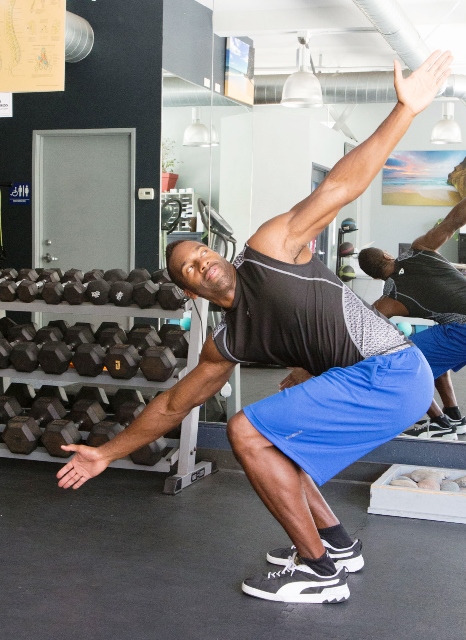Is Your Knowledge of Squats Out of Date?
“Deep squats are bad for the knees!”
Chances are you’ve heard this advice and maybe even given it to your clients. I know that for many years in my career I’ve been guilty of making similar recommendations to clients in all walks of life. The problem is, where did this advice come from? Is it valid and who is it valid for? What principles should we follow when doing or teaching one of the most popular exercises on the planet?
This article will share much of the latest research about the science and application of squats and help separate fact from myth.
Are Deep Squats Bad for the Knees?
It is understandable to assume that the deeper the knee flexes, the more pressure this puts on the soft-tissue structures surrounding the knee. However, is this true? And is more “pressure” or force a bad thing?
Interestingly enough, force applied to the anterior cruciate ligament and the posterior cruciate ligament during a squat actually diminishes during the deeper portions of the squat. In a study analyzing load on the knee at various squat heights, Hartmann, Wirth & Klusemann (2013) say that concerns over the apparent higher risk for chondromalacia, osteoarthritis and osteochondritis in deep squats are unfounded. In fact, shallower squats actually expose the knee to greater compressive forces.
If you’re looking to explore a deep squat, recognize these three basic squatting principles:
- Load and joint freedom of motion have an inverse relationship. This means as load increases, freedom of motion through the joints decreases and vice versa. In other words, the heavier the load, the stricter we want to be about enforcing ideal form.
- Rhythm and timing (joint synchronization) are things to look for. Joint synchronization is the ability for multiple joints to move in concert to promote rhythmical motion and force dispersion during multijoint movements such as squats. Ideally, the ankles, knees and hips will all flex and extend congruently. Limitations in ankle and hip mobility can alter joint synchronization and inhibit a deep squat. Therefore, a great place to start conditioning a deep range is to elevate the heels or hold onto a TRX®: Suspension Trainer™ to counterbalance the hips. Combine this with mobility strategies and clients will be on their way.
- Pain is a signal to modify the squat. If squatting causes pain, modify the exercise by altering the footprint, range of motion, speed or direction in which the pelvis is being driven. If pain persists, then refer to a specialist.
Variable Squats
You probably already know a lot about traditional squats, but what about variable ones? Webster’s Dictionary defines variability from a biological perspective as “the power possessed by living organisms, both animal and vegetable, of adapting themselves to modifications or changes in their environment, thus possibly giving rise to ultimate variation of structure or function.” From a mechanical standpoint, reduced variability is known to cause repetitive stress injuries, while an optimal movement system has the capacity to perform a given task in a variety of ways (Harbourne & Stergiou 2009). This enhances our entire being, from our heart and nervous system to our connective tissues and bones. And for bodybuilders, there may be benefits to including variable movement strategies for increased strength and hypertrophy (Fonseca et al. 2014).
A standard personal training certification covers most of the training principles for traditional, sagittal-plane, heavy-loaded squats. What’s missing in certification texts are the benefits and rules of incorporating variable squats.
Variable squats offer a host of potential benefits when performed in the right environment:
- Exploring new positions through different planes of motion enhances the nervous system’s motor control. Simply put, learning how to squat in a variety of ways encourages the nervous system to find the optimal way to disperse forces through the system in multiple directions and positions.
- Bone density may increase to tolerate variable directional force (see mechanotransduction).
- Variable forces enhance the connective tissue matrix, improving shape stability, tissue resiliency and joint integrity (Myers 2011).
- Withstanding different lines of force requires greater intra- and inter-muscular coordination, potentially enhancing strength gains and hypertrophy (Fonseca et al. 2014).
For examples of variable squats and an in-depth look at squat research, plus a full list of references, please see “Is There a Right or Wrong Way to Squat?” in the online IDEA Library or in the September 2015 issue of IDEA Fitness Journal. If you cannot access the full article and would like to, please contact the IDEA Inspired Service Team at (800) 999-4332, ext. 7.
Derrick Price, MS
Derrick Price MS, CPT, PES, CES has been active on many levels in the fitness industry for over 8 years. He holds a MS in Exercise Science and Health Promotion with an emphasis on injury prevention and performance enhancement from the California University of Pennsylvania where he has also spent time as an Adjunct Faculty member teaching courses in Exercise Program Design. Aside from personal training at the acclaimed Function First in San Diego, CA, Derrick also is a Master Trainer for ViPR, Technogym, Core-Tex and Power Plate. He began his educational career as a Master Instructor for the National Academy of Sports Medicine and has since moved on to become a Faculty Member for the Personal Training Academy (PTA) Global. Derrick currently resides in San Diego with his wife Laura where they enjoy many outdoor activities such as hiking, golf, disc golf and a variety of other sports







